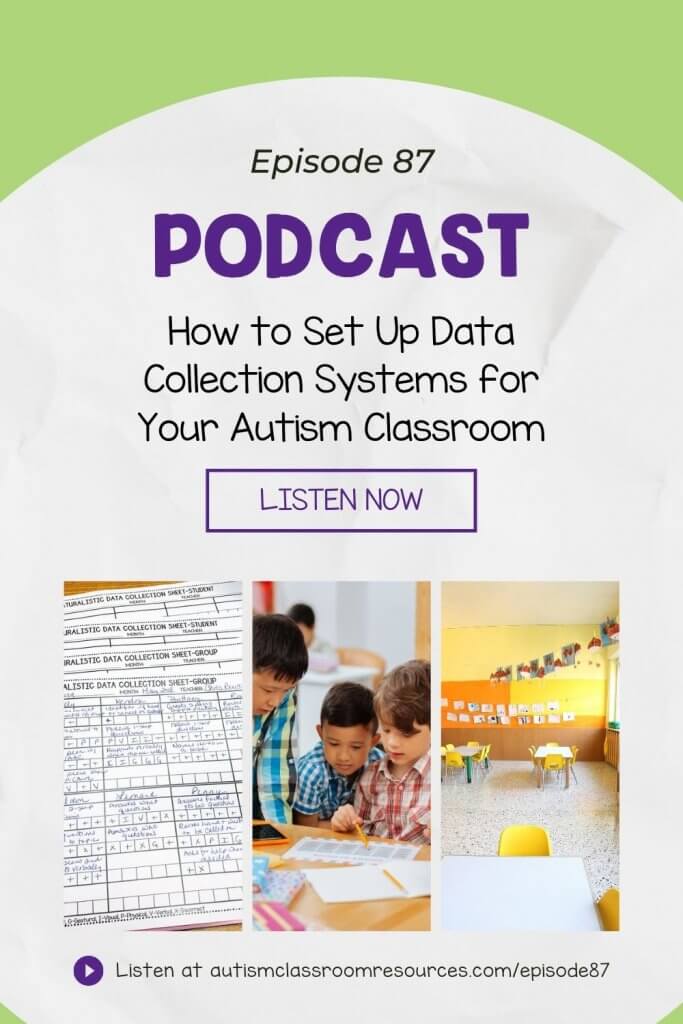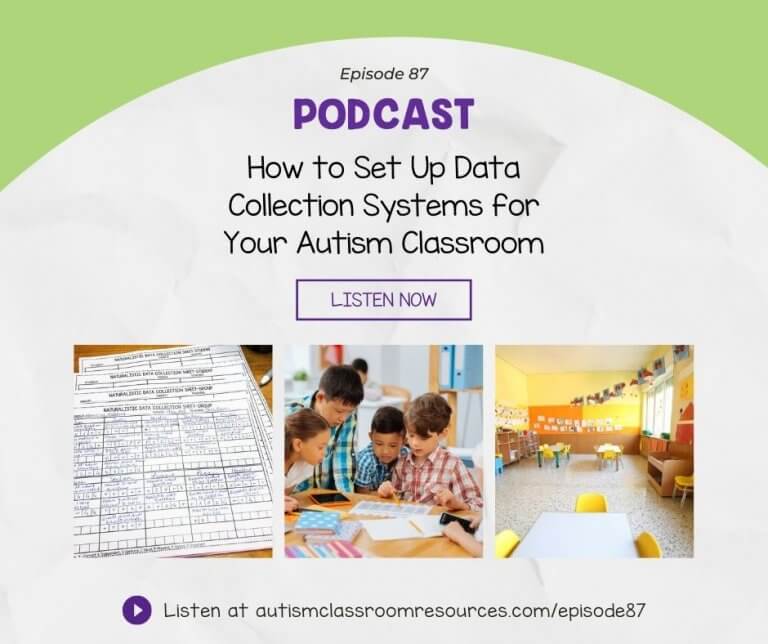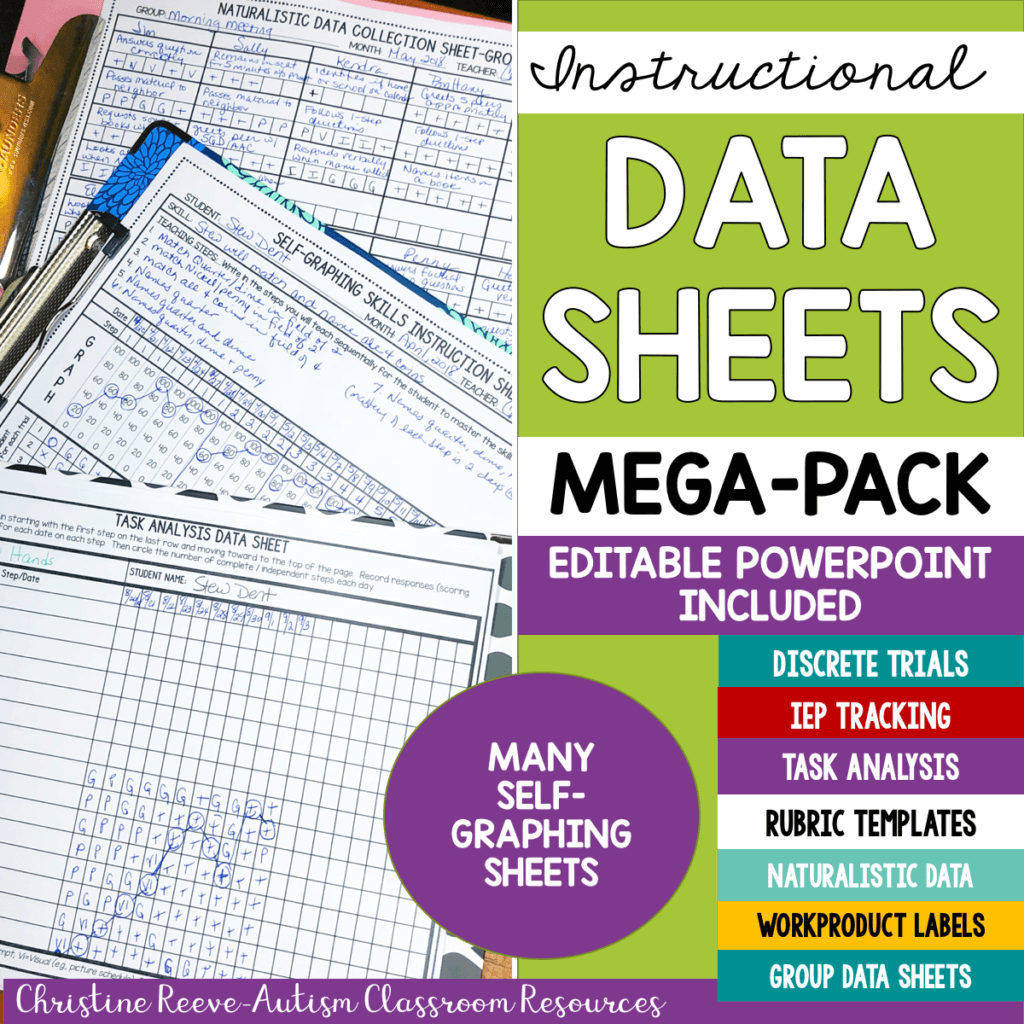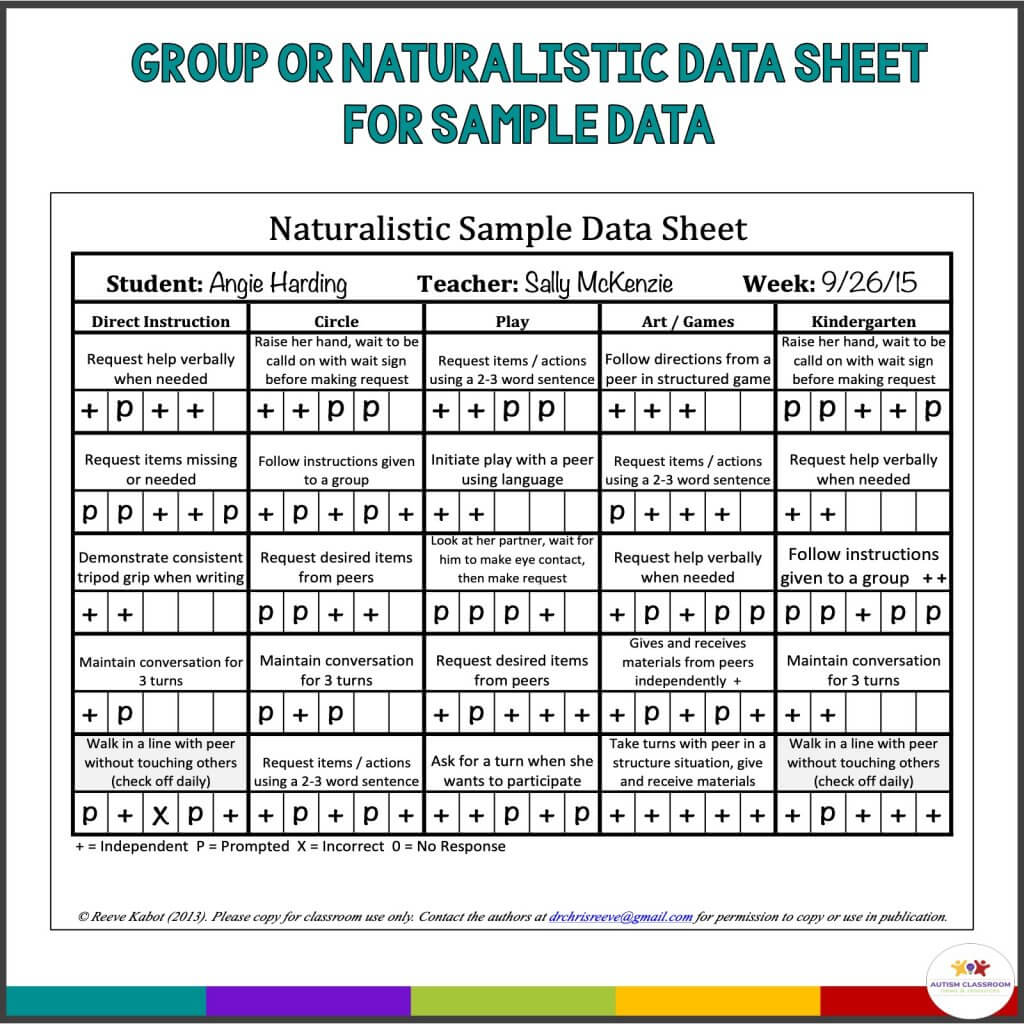Welcome to the Autism Classroom Resources Podcast, the podcast for special educators who are looking for personal and professional development.
Christine Reeve: I’m your host, Dr. Christine Reeve. For more than 20 years, I’ve worn lots of hats in special education but my real love is helping special educators like you. This podcast will give you tips and ways to implement research-based practices in a practical way in your classroom to make your job easier and more effective.
Welcome back to The Autism Classroom Resources Podcast. I’m Christine Reeve and I’m your host. I am so glad that you’re joining us as we talk about organizing systems in the classroom. My goal is to help you get your classroom running automagically and make it work for you, so you have less stress and you can focus on what matters, which I’m pretty sure is teaching. Now, if you’ve missed previous episodes about setting up the classroom and the systems that have led us here, go back to Episode 80 at autismclassroomresources.com/episode80 and start from the beginning. These are definitely systems that build on each other. It really will help to have that background because today, I’m going to focus on data.
Yup, I know I said a four letter word, data systems. It’s going to help to know what the Teaching Implementation Plan is. I call it the TIP. I talk about it in Episode 80 because it’s all going to start there, because data collection is about a lot more than finding the right data sheet. It’s about building a system. It’s about making sure that you have the right data, not more data. It’s about making a plan. That is what we’re going to start with. Because while I’d love to tell you that there is a one-size-fits-all data plan, I can’t do it because there isn’t. There isn’t even an agreed-upon pronunciation for it, I mean is it data (dādə)? Data (dadə)? I’ll share a secret. It’s both. We actually looked it up when we wrote the Taming the Data Monster book.
In today’s episode, I’m going to walk you through what you need to think about for creating systems for instructional data collection and how you get started. I’m going to point you to a bunch of different types of free resources in the blog post as well. All of this comes from the Taming the Data Monster course in the Special Educator Academy, which has tons of data collection tools and ideas to walk you through how to think about data on instruction and behavior. It’s all based on my book with my co-author Dr. Susan Cabot also called Taming the Data Monster. You can access that course with a seven-day free trial at specialeducatoracademy.com. Now, let’s get started with this episode.
If you’ve listened to any of the episodes in this series, you know it’s all about the systems with me in setting up classrooms. Data collection is no different. It can’t just be a bunch of random data sheets. One of the questions I get asked a lot is, “What data sheet should I use?” or “What’s one data sheet that I can use throughout my classroom?” While I do think we want to try to keep our system as easy as we can, there is no real answer to that question. Because what goes into your system depends on three things. It depends first, on the needs of your students and the skills that they’re working on. Different skills require different types of data. For instance, qualitative skills, like how well he interacts with other students, require different types of data than how many times he follows a direction.
Second, it depends on the type of teaching situation that they’re in. If I’m working one-to-one with a student on new material, I can take more data than I could in a large group if I was the only person there with 15 students.
Finally, three, it depends on the organizational style and skills of you and your staff. Yeah, that matters too and here’s why. The quality of the data is more important than the quantity of the data. I say this as someone who has walked into many a classroom to be greeted by giant three-ring binders of data, I mean huge notebooks of paper that I couldn’t use for anything because we couldn’t tell if it was reliable or it didn’t have the information we needed or we didn’t even know what it really meant. Sometimes, I didn’t even know what it really was. I often say, when I’m doing training in the academy or anywhere else, that I would rather have a small amount of high quality data that I can rely on than a huge amount of data that I’m just not sure is accurate. I can make decisions from that small reliable sample. I know I’m able to trust it. The other, not so much. Because of that, you have to have a data collection system that can be implemented by the staff who have to implement it. It has to be able to be implemented in the environment it is in.
We want data to be taken as much in real time as possible. Waiting just makes it less reliable because I’m getting older, so my memory probably is less reliable than yours but too much happens in the classroom to not get in the way of remembering what happened. Also, different people have different organizational and processing styles. For instance, I tend to have to do things on paper. I have a colleague who can handle three counter clickers and track the behavior of three different students at the same time with those counters. When I do that, I screw up. I record the behavior of one of those students on the wrong counter. There’s no undo button on those things. Now, I can record data on those three students and their three behaviors but I have to do it on masking tape or post-it notes with a pen, so I can scratch out my mistakes and correct them because inevitably, I’m going to write the wrong thing on the wrong thing. We need different tools because we process differently. Neither is wrong or right. We’re just individuals who need individual strategies. Does that sound familiar to anybody?
Now that I’ve defined that there is no one-size-fits-all strategy, let me talk about how we get started on building a strategy, then I have some resources that can really help you get started. First, start with the TIP. The Teaching Implementation Plan has you working through the data collection tool for each IEP goal as part of that process. It’s designed to help you think about how to teach the skill and how to track the skill as part of the process of doing it. Once it’s finished, you’ll know what the data collection tools are that you need to pull for your classroom. If you find that you have too much data being collected in some activities, then you go back and you make changes to the TIP to accommodate for that. I’ll make sure that there are links to learn more about the TIP, which I talked about in Episode 80, in the blog post for this episode so that you can click on them and you can find all the links for this episode at autismclassroomresources.com/episode87.
As you’re working on your TIP, you also want to be keeping in mind what your data collection activities look like throughout the day for your whole class. Remember that you can also use regular assessments, like work product and curriculum-based assessments, and tests as measures for monitoring performance. Not everything has to be a tally of data for every response. In fact, that’s not really feasible and because it’s not feasible, it’s not likely to be accurate.
In my FREE Resource Library, I have a free one-hour workshop on setting up a system of data collection in the classroom. It walks you through where I start to set up a system of data collection in the classroom. It will show you the types of data collection I generally start with and how I think about setting up a system in the classroom to start. I generally use a combination of a group data sheet or a naturalistic data sheet that uses samples of data with multiple samples across the week, then individual data for direct instruction, then also work product and test as much as possible. There’s a really nice bonus if you finish the workshop for tools to get you started. I’ll make sure that there’s a direct link in the show notes but there will also be a link at autismclassroomresources.com/episode87. You’ll also find a free group and naturalistic data sheet in the Resource Library that I talk about in the workshop and that I just mentioned, as well as a link to the free tutorial for that particular data sheet on TpT in that blog post. Those will give you some tools to get started. I do a lot of sample data that is programmed into the activities of the classroom. That workshop actually walks you through how to do that.
Now, you have to integrate your data plan with your zoning plan. You have to make sure that you have enough staff to take the data during each activity that you have outlined for each of your students on your TIP. You have to have a balance of who’s available to teach and support, and who’s available to collect data. You can do both at the same time but you can’t do everything all at one time. You can’t do too much at one time. You don’t want your data to overtake your instruction and support for activities either because data without instruction is just silly. If you can’t teach, taking data just doesn’t really make sense.
Once you’ve integrated those two systems, go over them and examine what you have. Look first at your most pressing data needs. That might be your most significant challenging behaviors that you’re addressing and the most prominent IEP goals that you’re tracking, then make adjustments to your TIP plans for your students and your zoning plan. When you see that, “Wow, I’ve got a ton of goals over in circle but very few goals in snack or art or recess,” then shift accordingly. You have to make adjustments. There’s no doubt about that and that’s okay. That’s the way the system works as you balance them out. That’s a piece of this entire process. Then you have to try it out, because here’s the final key I want to tell you about data collection systems: taking data is like a habit. It becomes a habit after you do it for a while. It takes time for something to become a habit. Whenever you try to learn a new habit, it takes a while to do it. Whether it’s a system or just a new data sheet, give it a while for you to get used to it. Give it a couple weeks before you decide if it will work for you or not. Otherwise, you might throw it out before you give it a fair shot. Don’t be afraid to start small and grow. You can only do so much. Remember, again, that quality data is better than quantity data that you can’t rely on.
Make sure you hop over to the blog post at autismclassroomresources.com/episode87 and grab the free group data sheet and the free data workshop. They come from a workshop that was developed for the members of the Special Educator Academy. If you want to give us a try with a seven-day free trial, check us out at specialeducatoracademy.com.
Thank you so much for tuning in. I hope you’ll come back next week when I’ll be starting to talk about how we create systems for data analysis because your data only works if you analyze it. Until then, I’ll just be over here admiring the quality of my data.











